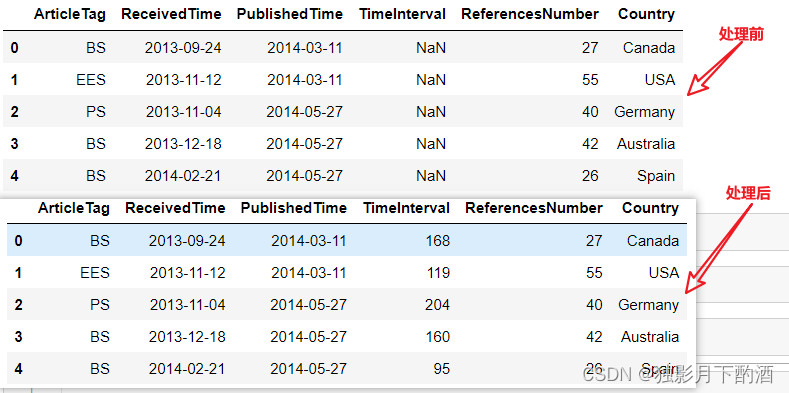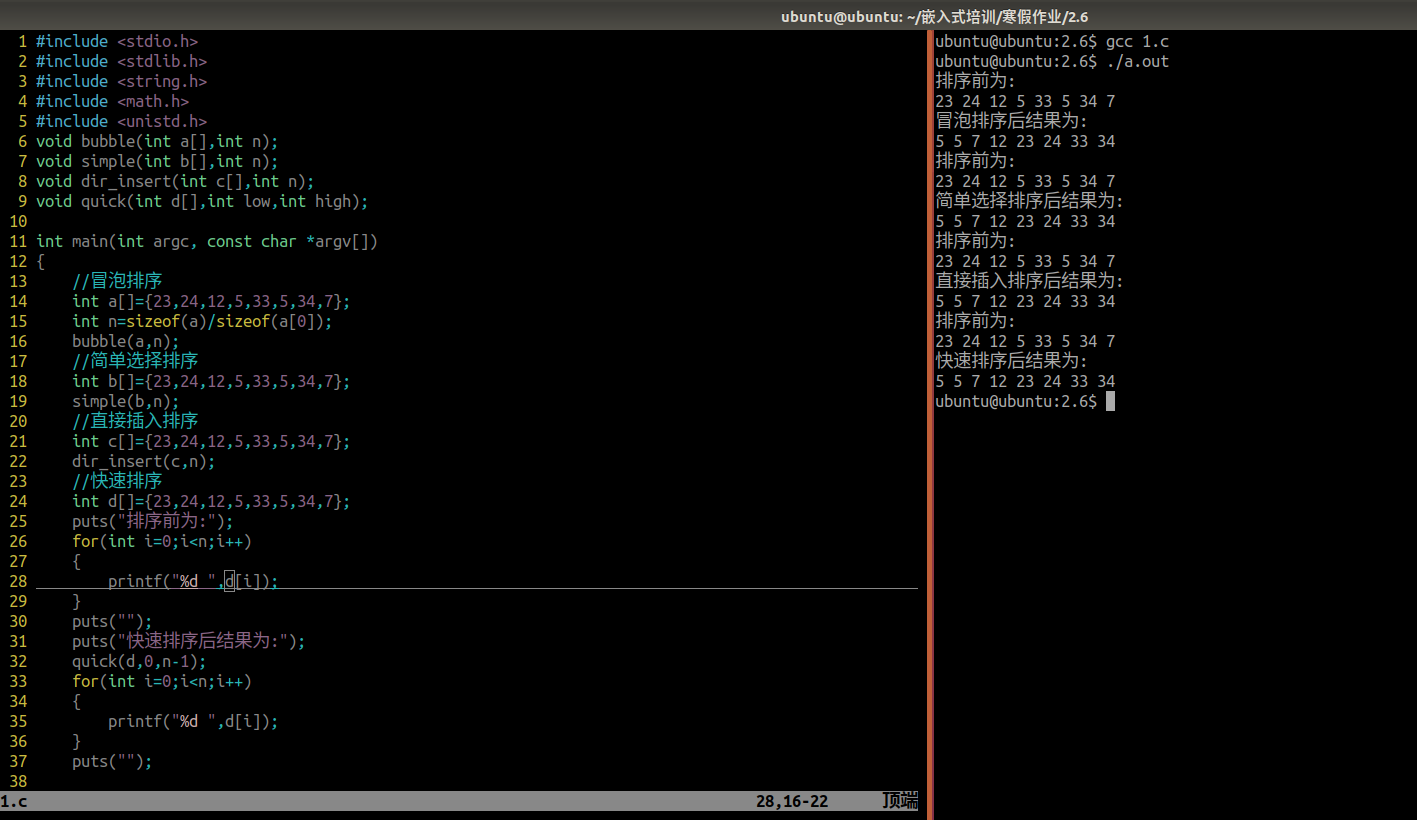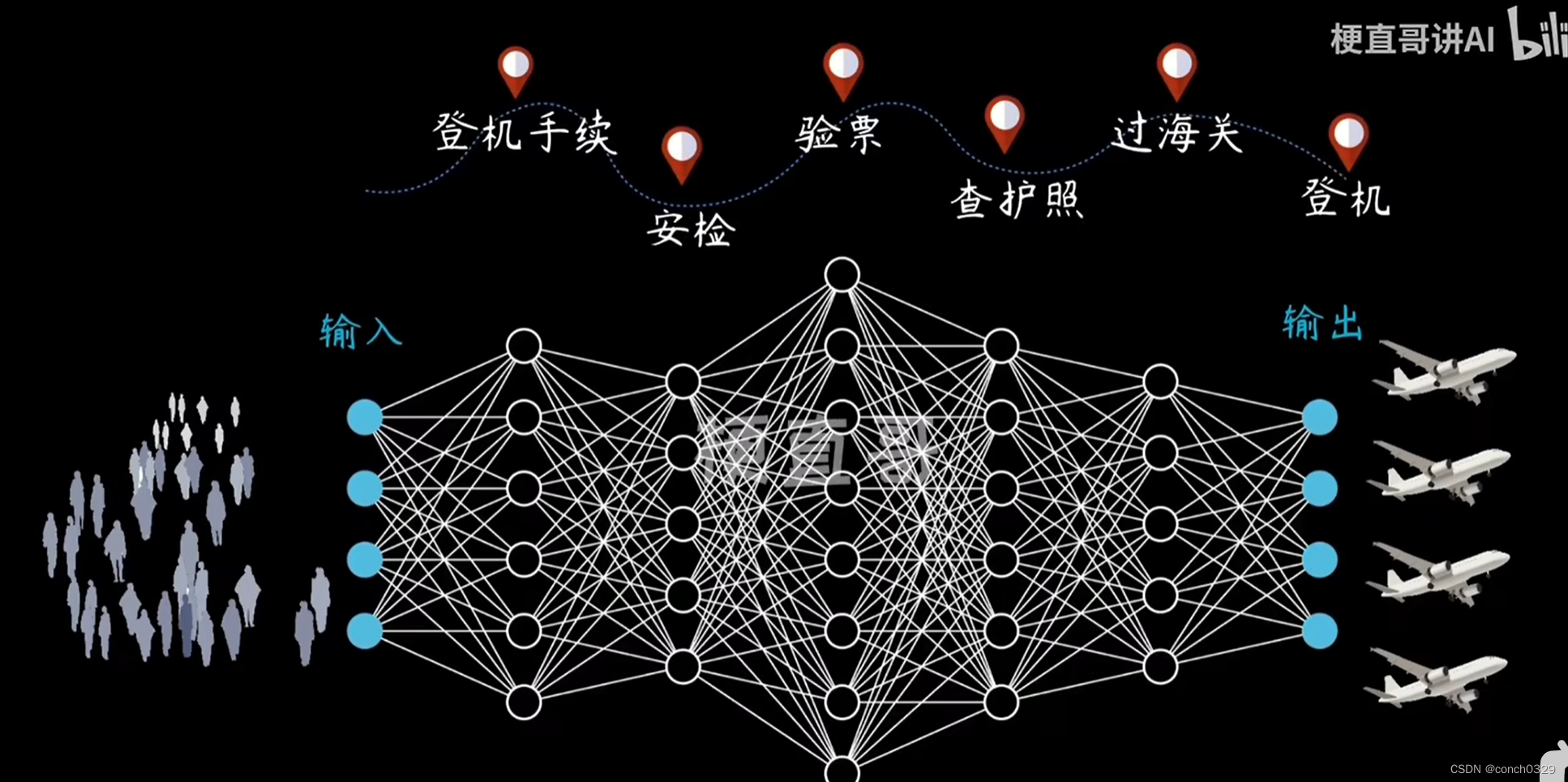本文介绍: 1.基本信息 Pandas 的 apply() 方法是用来调用一个函数(Python method),让此函数对数据对象进行批量处理。 Pandas 的很多对象都可以使用 apply() 来调用函数,如 Dataframe、Series、分组对象、各种时间序列等。2.语法结构 apply() 使用时,通常放入一个 lambda 函数表达式、或一个函数作为操作运算,官方上给出DataFrame的 apply() 用法:DataFrame.apply(self, func, axis=0, r
1.基本信息
Pandas 的 apply() 方法是用来调用一个函数(Python method),让此函数对数据对象进行批量处理。Pandas 的很多对象都可以使用 apply() 来调用函数,如 Dataframe、Series、分组对象、各种时间序列等。
2.语法结构
apply() 使用时,通常放入一个 lambda 函数表达式、或一个函数作为操作运算,官方上给出DataFrame的 apply() 用法:
DataFrame.apply(self, func, axis=0, raw=False, result_type=None, args=(), **kwargs)
参数:
返回值:
Objects passed to the function are Series objects whose index is either the DataFrame's index (``axis=0``) or the DataFrame's columns(``axis=1``).
传递给函数的对象是Series对象,其索引是DataFrame的索引(axis=0)或DataFrame的列(axis=1)。
By default (``result_type=None``), the final return type is inferred from the return type of the applied function. Otherwise,it depends on the `result_type` argument.
默认情况下( result_type=None),最终的返回类型是从应用函数的返回类型推断出来的。否则,它取决于' result_type '参数。
区别:
联系:
3.使用案例
3.1 DataFrame使用apply
import pandas as pd
import numpy as np
df = pd.DataFrame([[4, 9]] * 3, columns=['A', 'B'])
df
A B
0 4 9
1 4 9
2 4 9
# 使用numpy通用函数 (如 np.sqrt(df)),
df.apply(np.sqrt)
'''
A B
0 2.0 3.0
1 2.0 3.0
2 2.0 3.0
'''
# 使用聚合功能
df.apply(np.sum, axis=0)
'''
A 12
B 27
dtype: int64
'''
df.apply(np.sum, axis=1)
'''
0 13
1 13
2 13
dtype: int64
'''
# 在每行上返回类似列表的内容
df.apply(lambda x: [1, 2], axis=1)
'''
0 [1, 2]
1 [1, 2]
2 [1, 2]
dtype: object
'''
# result_type='expand' 将类似列表的结果扩展到数据的列
df.apply(lambda x: [1, 2], axis=1, result_type='expand')
'''
0 1
0 1 2
1 1 2
2 1 2
'''
# 在函数中返回一个序列,生成的列名将是序列索引。
df.apply(lambda x: pd.Series([1, 2], index=['foo', 'bar']), axis=1)
'''
foo bar
0 1 2
1 1 2
2 1 2
'''
# result_type='broadcast' 将确保函数返回相同的形状结果
# 无论是 list-like 还是 scalar,并沿轴进行广播
# 生成的列名将是原始列名。
df.apply(lambda x: [1, 2], axis=1, result_type='broadcast')
'''
A B
0 1 2
1 1 2
2 1 2
'''
其他案例:
import numpy as np
import pandas as pd
df = pd.DataFrame({'A': [1, 2, 3],
'B': [4, 5, 6],
'C': [7, 8, 9]},
index=['a', 'b', 'c'])
df
A B C
a 1 4 7
b 2 5 8
c 3 6 9
# 对各列应用函数 axis=0
df.apply(lambda x: np.sum(x))
A 6
B 15
C 24
dtype: int64
# 对各行应用函数
df.apply(lambda x: np.sum(x), axis=1)
a 12
b 15
c 18
dtype: int64
3.2 Series使用apply
s = pd.Series([20, 21, 12],index=['London', 'New York', 'Helsinki'])
s
'''
London 20
New York 21
Helsinki 12
dtype: int64
'''
# 定义函数并将其作为参数传递给 apply,求值平方化。
def square(x):
return x ** 2
s.apply(square)
'''
London 400
New York 441
Helsinki 144
dtype: int64
'''
# 通过将匿名函数作为参数传递给 apply
s.apply(lambda x: x ** 2)
'''
London 400
New York 441
Helsinki 144
dtype: int64
'''
# 定义一个需要附加位置参数的自定义函数
# 并使用args关键字传递这些附加参数。
def subtract_custom_value(x, custom_value):
return x - custom_value
s.apply(subtract_custom_value, args=(5,))
'''
London 15
New York 16
Helsinki 7
dtype: int64
'''
# 定义一个接受关键字参数并将这些参数传递
# 给 apply 的自定义函数。
def add_custom_values(x, **kwargs):
for month in kwargs:
x += kwargs[month]
return x
s.apply(add_custom_values, june=30, july=20, august=25)
'''
London 95
New York 96
Helsinki 87
dtype: int64
'''
# 使用Numpy库中的函数
s.apply(np.log)
'''
London 2.995732
New York 3.044522
Helsinki 2.484907
dtype: float64
'''
3.3 其他案例
import pandas as pd
# 显示所有列
pd.set_option('display.max_columns', None)
# 显示所有行
pd.set_option('display.max_rows', None)
# 设置value的显示长度为100,默认为50
pd.set_option('max_colwidth', 100)
# 用来计算日期差的包
import datetime
def dataInterval(data1, data2):
"""
Args:
:param data1: datetime
:param data2: datetime
:return: delta days
"""
d1 = datetime.datetime.strptime(data1, '%Y-%m-%d')
d2 = datetime.datetime.strptime(data2, '%Y-%m-%d')
delta = d1 - d2
return delta.days
def getInterval(arrLike):
"""
Args:
:param arrLike: DataFrame
:return: delta days
"""
PublishedTime = arrLike['PublishedTime']
ReceivedTime = arrLike['ReceivedTime']
days = dataInterval(PublishedTime.strip(), ReceivedTime.strip())
return days
def getInterval_new(arrLike, before, after):
"""
Args:
:param arrLike: DataFrame
:param before: forward time
:param after: backwar time
:return: delta days
"""
before = arrLike[before]
after = arrLike[after]
days = dataInterval(after.strip(), before.strip())
return days
if __name__ == '__main__':
df = pd.read_excel('./data/NS_info.xls')
print(df.head())
# method 1
df['TimeInterval'] = df.apply(getInterval, axis=1)
print(df.head())
# method 2
df['TimeInterval'] = df.apply(getInterval_new,axis=1,
args=('ReceivedTime', 'PublishedTime'))
# method 3
df['TimeInterval'] = df.apply(getInterval_new,axis=1,
**{'before': 'ReceivedTime', 'after': 'PublishedTime'})
# method 4
df['TimeInterval'] = df.apply(getInterval_new,axis=1, before='ReceivedTime', after='PublishedTime')

4.总结
1.apply方法都是通过传入一个函数或者lambda表达式对数据进行批量处理
1.https://blog.csdn.net/missyougoon/article/details/83301712
2.https://blog.csdn.net/qq_19528953/article/details/79348929
原文地址:https://blog.csdn.net/weixin_44852067/article/details/122364306
本文来自互联网用户投稿,该文观点仅代表作者本人,不代表本站立场。本站仅提供信息存储空间服务,不拥有所有权,不承担相关法律责任。
如若转载,请注明出处:http://www.7code.cn/show_47096.html
如若内容造成侵权/违法违规/事实不符,请联系代码007邮箱:suwngjj01@126.com进行投诉反馈,一经查实,立即删除!
声明:本站所有文章,如无特殊说明或标注,均为本站原创发布。任何个人或组织,在未征得本站同意时,禁止复制、盗用、采集、发布本站内容到任何网站、书籍等各类媒体平台。如若本站内容侵犯了原著者的合法权益,可联系我们进行处理。





